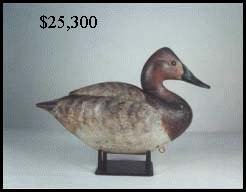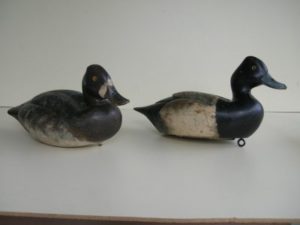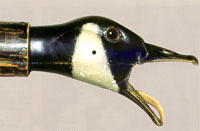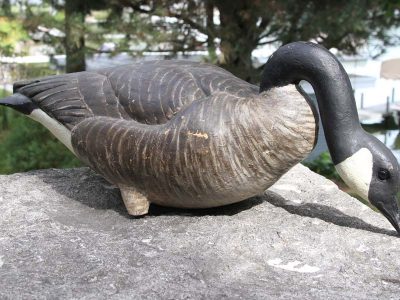Anyone that is familiar with wildlife art has probably heard the name of Owen Gromme. His wildlife paintings have established him as an icon of American artists. He was honored in 1945 as the winner of the federal duck stamp art depicting three shovelers in flight. He was also selected as the artist to paint the first Wisconsin Waterfowl stamp in 1978, woodies in flight. Many may not know this, but Owen Gromme was also a talented decoy carver that provided highly realistic interpretations of hunting decoys!
Owen Justus Gromme was born in Fond du Lac, Wisconsin on July 5, 1896. He grew up along the shores of Lake Winnebago and spent his early years in the field with his father, hunting, trapping and fishing. Little did he know at the time, but his early years nurtured his profound interest in nature that would shape his entire life. Owen never finished high school or had any formal art training. He was very active, however, keeping a journal of his daily activities.
Owen’s first formal job was with the Museum of Natural History in Chicago, where he worked as a taxidermist under Herbert Stoddard. This brought out Owen’s serious interest in art and painting, most commonly of birds. His scenes included an entire environmental depiction and were very realistic to the bird and habitat. Owen Gromme has produced hundreds of wildlife paintings over his career.
Gromme moved on to become Curator at the Milwaukee Public Museum in the 1920’s and this is where he became serious in carving decoys. Most believe these started for his own use as he was an avid waterfowler. Gromme’s decoys utilize the distinctive style that is referred to as the Milwaukee School of Carving. He pioneered the design and passed on patterns to influence the decoys of fellow taxidermists Pelzer, Warren Dettman and Earl Voelker, also working at the museum. Gromme made mallard, pintail, bluebill, ringbill canvasback and Canada goose decoys, carved in natural positions with fine details. Most of the primaries and wing tips are relief carved, and the heads and bills are recreated in exacting detail. The decoy bodies are deep and nicely rounded with a flat bottom. His painting was done with the precision of a trained eye.
Owen donated a number of his paintings and decoy carvings to conservation organizations to raise money for habitat improvements. He helped to raise hundreds of thousands of dollars for conservation projects throughout the US and Wisconsin!

Rare canvasback hen by Owen Gromme World auction record for maker, image courtesy Guyette and Deeter
Owen Justus Gromme passed away on October 29th, 1991 at the age of 95 at a retirement complex he was living at in Madison, Wisconsin. Although you may not be able to find Gromme decoys at local auctions or rummage sales, thee are still many of his decoys that are available on the secondary market, many of which command high values. According to Warman’s Duck Decoys (2006) by Russell Lewis, the Milwaukee School decoys command values between $500-$5000 depending on the carver. Gromme’s decoys would be in that higher price range.
I was able to hold one of Owen Gromme’s early decoys at the Oshkosh Decoy Show in Oshkosh last March. The collector had it for sale for $10,000. I would argue that it wasn’t really for sale!
Owen Gromme is an icon in Wisconsin Waterfowling history, and if you are privy to having one of his decoys or one of the Milwaukee School of Carving blocks, you certainly have a Wisconsin original to enjoy on your mantel.
Good luck in your collecting!



